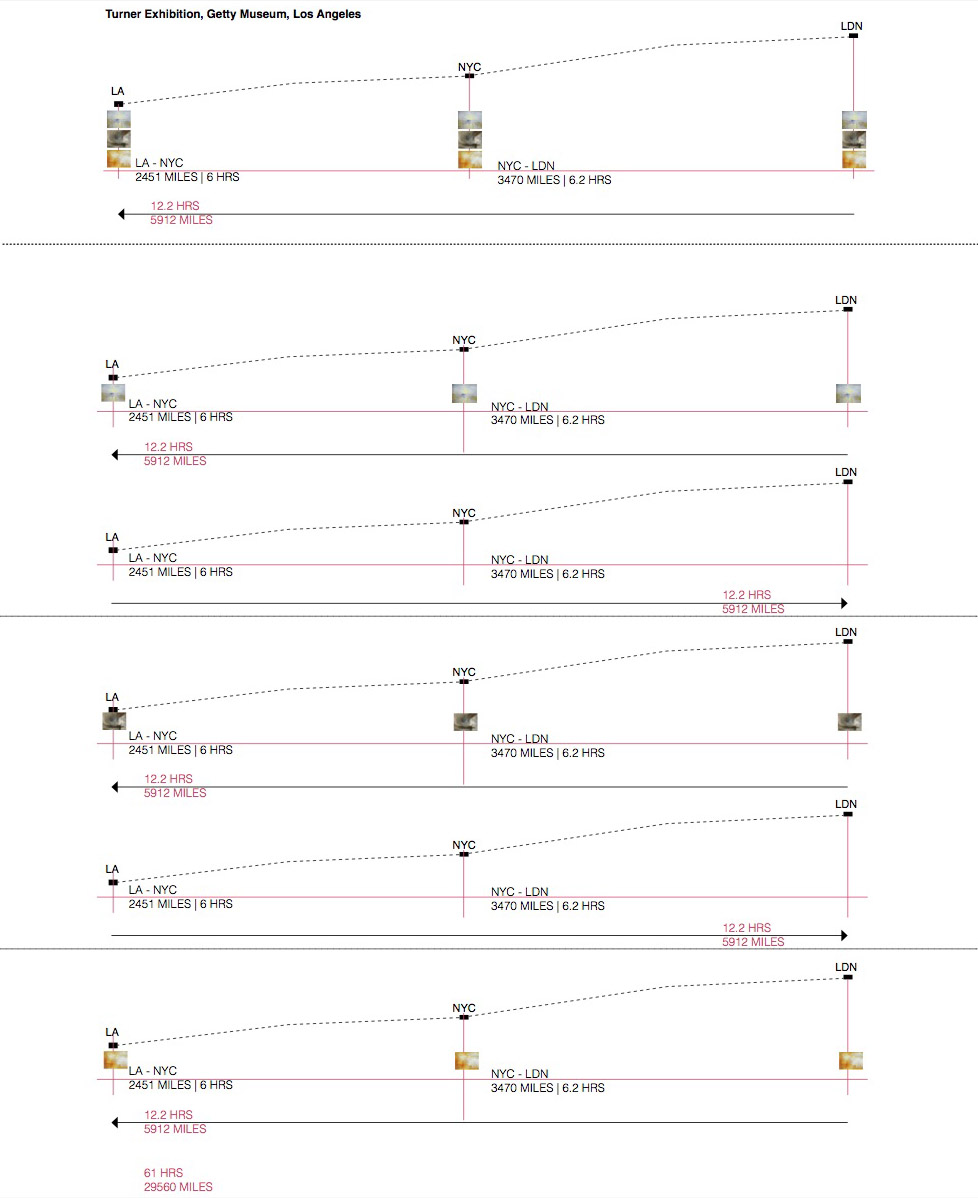The Art of Logistics

Emily Cass / 2019
Yale School of Architecture
“Work crews from 100 utility districts will accompany the rock to take down traffic signs, overhead wires and other obstacles, then reinstall them once the giant transporter moves on. A signal expert will move and then reinstate the traffic lights that otherwise would be mowed down like blades of grass by the transporter, which is nearly as wide as three freeway traffic lanes.”
—Deborah Vankin, Between a Rock and LACMA, it’s a hard place
![]()
In 2012 LACMA shipped Michael Heizer’s “Levitated Mass” from the outskirts of LA to the city center. The shipment required a customized route accounting for bridge height, street weight-load, and tractor-trailer turning radius. The object’s outsized dimensions determined the logistics strategy. Levitated Mass illustrates the opaque and convoluted networks that determine the consumption of art both by collectors and the general public. These networks include physical display, storage, shipping, insurance requirements, and tax considerations.
![]()
Turner Exhibition: The Getty Museum
Three years later, another LA museum had a different logistics challenge influenced by value rather than size. The Getty was borrowing paintings by J.M.W. Turner for an exhibition, and insurance conditions limited the total value of shipment [1]. Transatlantic flights could not transport multiple Turner paintings from London because of the painting’s extremely high value. Consequently couriers had to travel back and forth, making five transatlantic trips between LA and London, to move the paintings for the exhibition. The situation illustrates the value constraints that can be used to challenge simple notions of logistical efficiency.
![]()
The Game
In response to this research, a board game, The Life of Art, simulates these networks, shedding light on the logistical chaos that is embedded within each piece of art. The board game format playfully imitates the distant relationships that many collectors have with their art, tracking assets that move between storage facilities with checklists, thumbnail images, and ledgers.
![]()
![]()
![]()
Yale School of Architecture
“Work crews from 100 utility districts will accompany the rock to take down traffic signs, overhead wires and other obstacles, then reinstall them once the giant transporter moves on. A signal expert will move and then reinstate the traffic lights that otherwise would be mowed down like blades of grass by the transporter, which is nearly as wide as three freeway traffic lanes.”
—Deborah Vankin, Between a Rock and LACMA, it’s a hard place

In 2012 LACMA shipped Michael Heizer’s “Levitated Mass” from the outskirts of LA to the city center. The shipment required a customized route accounting for bridge height, street weight-load, and tractor-trailer turning radius. The object’s outsized dimensions determined the logistics strategy. Levitated Mass illustrates the opaque and convoluted networks that determine the consumption of art both by collectors and the general public. These networks include physical display, storage, shipping, insurance requirements, and tax considerations.
Turner Exhibition: The Getty Museum
Three years later, another LA museum had a different logistics challenge influenced by value rather than size. The Getty was borrowing paintings by J.M.W. Turner for an exhibition, and insurance conditions limited the total value of shipment [1]. Transatlantic flights could not transport multiple Turner paintings from London because of the painting’s extremely high value. Consequently couriers had to travel back and forth, making five transatlantic trips between LA and London, to move the paintings for the exhibition. The situation illustrates the value constraints that can be used to challenge simple notions of logistical efficiency.

The Game
In response to this research, a board game, The Life of Art, simulates these networks, shedding light on the logistical chaos that is embedded within each piece of art. The board game format playfully imitates the distant relationships that many collectors have with their art, tracking assets that move between storage facilities with checklists, thumbnail images, and ledgers.



1. “The Getty Museum.” The Photography of Ray K. Metzker and the Institute of Design.